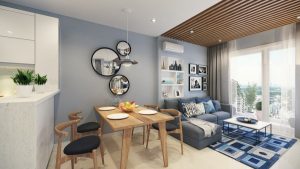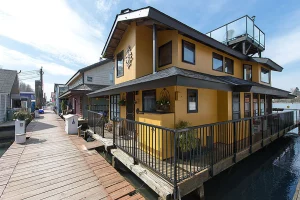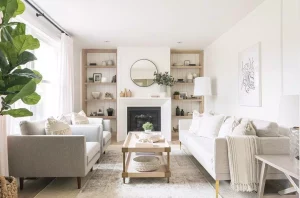
Reshaping Retail: Proven Strategies for Commercial Spaces
The retail landscape is undergoing a transformation, and this article explores proven strategies to reshape and succeed in today’s dynamic world of retail. Commercial spaces are being reimagined for a brighter future.
Navigating the Evolving Retail Landscape
The retail industry is evolving rapidly, influenced by e-commerce, shifting consumer behaviors, and global dynamics. To excel, retailers must embrace smart strategies that have been proven effective.
Table 1: Navigating the Evolving Retail Landscape
| Strategy | Description |
|---|---|
| Omnichannel Retailing | Seamlessly integrating online and offline shopping, creating a holistic and convenient customer experience. |
| Experiential Retail | Focusing on delivering memorable in-store experiences that transcend traditional shopping and build brand loyalty. |
| Sustainability Practices | Embracing eco-friendly and ethical practices to attract environmentally conscious consumers and contribute to a better world. |
| Data-Driven Decision-Making | Utilizing data analytics to gain insights into customer preferences and adjust strategies accordingly. |
Crafting Memorable In-Store Experiences
In an era dominated by online shopping, retailers must offer in-store experiences that captivate customers and create lasting memories. This involves thoughtful store design and personalized customer interactions.
Table 2: Elements of Memorable In-Store Experiences
| Element | Description |
|---|---|
| Store Layout and Design | Creating an attractive, user-friendly store layout that aligns with the brand’s identity and values. |
| Interactive Displays | Incorporating cutting-edge technology and interactive displays to engage and educate customers, making their visit memorable. |
| Personalized Customer Service | Offering personalized assistance, tailored product recommendations, and top-notch service to enhance the shopping experience. |
| In-Store Events and Workshops | Hosting engaging events, workshops, or product launches that encourage customer participation and build a sense of community around the brand. |
Leveraging Technology
Technology is an indispensable tool for achieving success in retail. It can enhance customer experiences, streamline operations, and provide valuable data for informed decision-making.
Table 3: Harnessing Technology in Retail
| Technology | Description |
|---|---|
| Augmented Reality (AR) | Utilizing Augmented Reality for interactive product visualization and immersive shopping experiences that redefine retail. |
| Mobile Apps | Developing mobile apps with personalized recommendations, in-store navigation, and loyalty rewards to provide added value to customers. |
| Contactless Payment Solutions | Implementing contactless payments and integrating mobile wallet solutions for convenience, security, and a modern shopping experience. |
| Inventory Management Systems | Using advanced inventory management systems with real-time updates to ensure accurate stock levels and prevent overstocking or stockouts. |

Sustainability and Ethical Practices
Today’s consumers are increasingly drawn to brands that prioritize sustainability and ethical practices. Retailers can attract environmentally conscious consumers by adopting green initiatives and demonstrating social responsibility.
Table 4: Sustainability and Ethical Practices in Retail
| Practice | Description |
|---|---|
| Eco-Friendly Products | Offering products made from sustainable materials or produced through ethical processes, catering to the conscious consumer. |
| Reduced Packaging Waste | Minimizing packaging waste, adopting eco-friendly packaging, or implementing recycling programs to contribute to a greener planet. |
| Energy Efficiency | Implementing energy-efficient lighting and heating systems to reduce energy consumption and lower environmental impact. |
| Social Responsibility Programs | Participating in community initiatives or charitable projects to demonstrate a commitment to social causes and give back to the community. |
Data-Driven Decision-Making
Data analytics is pivotal for achieving success in retail. By collecting and analyzing customer data, retailers can gain a deep understanding of their audience and tailor their strategies for maximum impact.
Table 5: Data-Driven Decision-Making
| Data Insight | Application |
|---|---|
| Customer Preferences | Adapting product offerings and marketing strategies based on detailed insights into customer preferences and behavior. |
| Foot Traffic Analysis | Optimizing store layout and staffing based on peak shopping hours, ensuring operational efficiency. |
| Inventory Insights | Maintaining optimal inventory levels by closely monitoring stock levels, preventing overstocking and stockouts. |
| Sales and Marketing Analytics | Fine-tuning sales and marketing strategies for maximum effectiveness, optimizing resource allocation. |
Conclusion
The retail industry is experiencing a profound transformation, and enduring success depends on adaptability and innovation. By embracing omnichannel retailing, creating memorable in-store experiences, leveraging technology, adopting sustainability and ethical practices, and employing data-driven decision-making, retailers can reshape and thrive in the ever-evolving world of retail. These strategies have been proven to not only meet the changing demands of customers but also to provide a new level of excitement and value in the retail experience, ensuring a brighter future for commercial spaces.
















